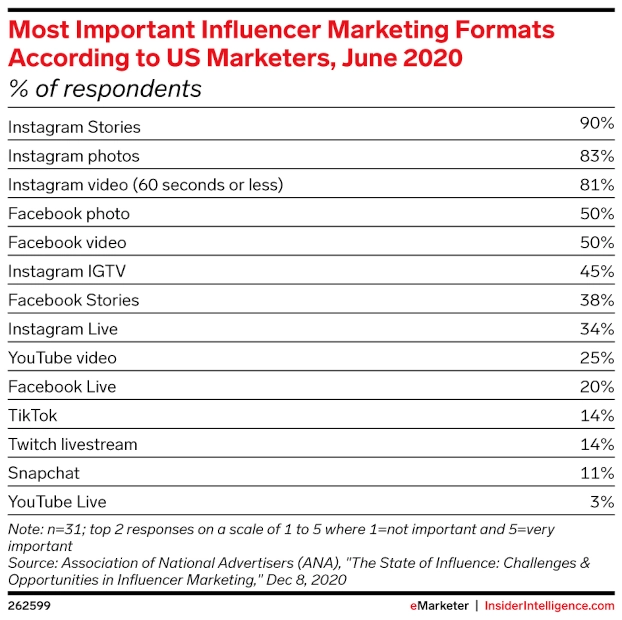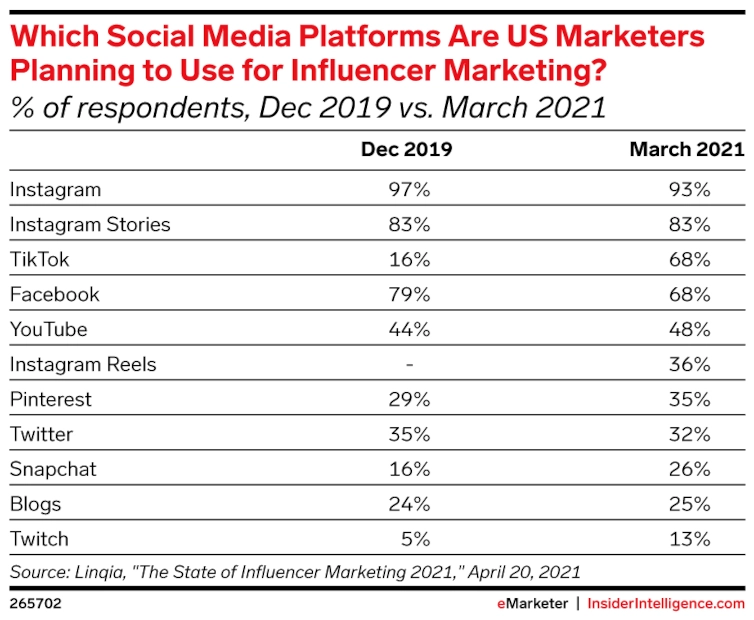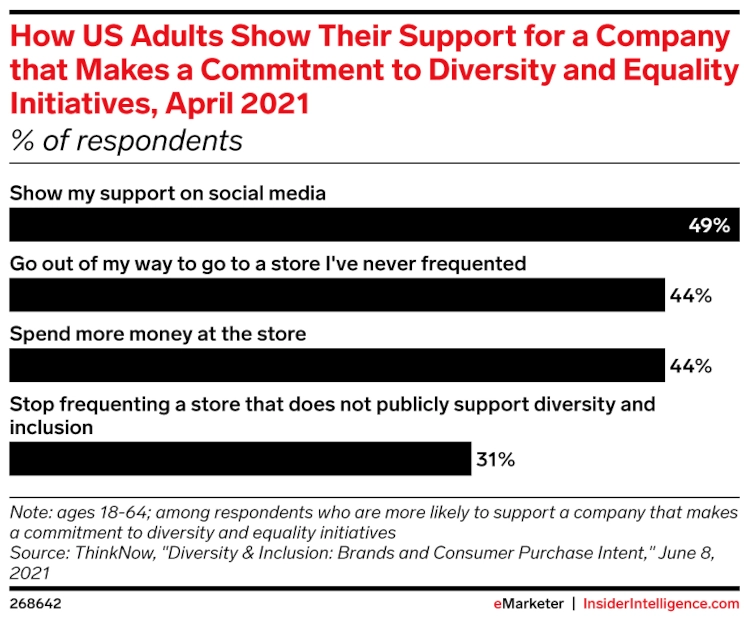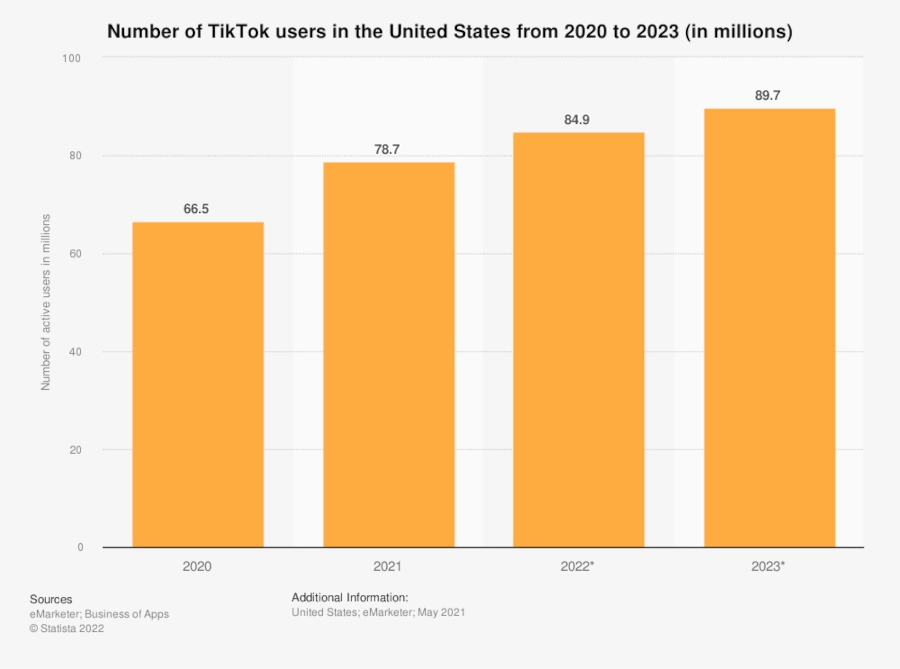Reading Time: 23 Minutes
Content marketing is the backbone of all forms of marketing and shapes the core of any successful marketing strategy. With relevant, up-to-date, high-quality content, brands can attract consumer attention, engage audiences, and drive conversions.
But the way people consume content changes constantly and consumer marketing trends must change with them. As the digital landscape continues to evolve, marketers must rethink the ways in which they reach their target audiences and stay ahead of the competition.
Let’s take a look at 20 of the most innovative social media trends that are shaping the future of marketing.
Virtual reality (VR) and augmented reality (AR) has opened up a whole new world for online marketers. Taking advantage of these new capabilities can create a memorable customer experience and help consumers see products in a completely new light.
There are a number of brands already having great success with AR and VR technology and have set the tone for what success looks like in that space.
For example, IKEA launched its app IKEA Place in 2017 which allows customers to virtually “place” furnishings in their home with 3D true-to-scale images so users can “try before they buy.”
Online auto retailer Vroom released a VR experience for its consumers in 2016 that includes a virtual showroom, side-by-side comparisons, and even virtual test drives.
Live video content is a win for brands and creators alike. It provides some of the highest engagement rates on social media and is a great way to captivate target audiences.
Other benefits of live video include:
Stories started off on Snapchat and today they are everywhere – from Instagram and Facebook to WhatsApp and Messenger.
Stories remain up for 24 hours and give the poster the option to add images, videos, and text. These Story features give brands the chance to change their content regularly and experiment with new types of content.
Instagram recently expanded the option to share links in Stories to all its users, which allows any creator to insert a direct call-to-action for their audience. Instagram Stories was the most important marketing format for marketers in 2020 and continues to play an integral part of every influencer marketing campaign.

Consumers value the authenticity and relevance of content more than ever before, and brands need to meet this demand to find success in 2022.
According to research by the Content Marketing Institute, 90% of the best-performing content marketers prioritize relevance over promotions while creating content. They are successful because they listen to consumers, which builds brand trust and helps provide their audience with useful content.
But relevant content means very little if it is inauthentic. In 2021, authentic content remained far and away the No. 1 attribute adult consumers would like to see more of from brands.

UGC is more authentic than branded content because it comes directly from the users of a product rather than the company selling it. Studies consistently show that non-branded product shoutouts have a much greater impact with audiences than branded posts.
Consumers love connecting with their favorite brands, which in turn increases the brand’s organic growth on social media, creates chatter around consumer experiences, and greatly lowers customer acquisition costs.
More and more brands should make it easier for fans to connect online in 2022 to generate positive UGC that can be leveraged to improve their entire marketing strategy.
Artificial intelligence and machine learning has earned an expanded role in the field of content marketing. As trends continue to change, these technologies will help marketers keep their strategies relevant.
Here are just a few of the major ways AI will help improve content marketing:
Personalization takes many different forms, but the bottom line is that customers want to feel valued and appreciated.
“People are starving to feel recognized, to feel like someone really cares about them. So any gesture you make to try to reach out has a tremendous impact.”
– David Wachs, founder of Handywrytten, from the GRIN Gets Real podcast (Ep. 29)
According to a study by Evergage, 98% of marketers agreed that personalization helps improve customer relationships, and 88% of marketers stated that their customers expect a personalized experience.
Brands should make a point to collect as much data as their audience will offer up to them including name, email, age, etc., so they can provide a personalized consumer experience whenever possible.
Topic clusters are not a new trend, but it’s one that is still going strong and will continue to be adopted by an increasing number of marketers.
Topic clusters form by selecting a broad industry topic and creating several pieces of content related to its subtopics. The core topic should be a relevant and trending industry topic, and all related content pieces should be interlinked.
The goal is to provide customers with all information on a topic in a single place. It also makes it easier for them to find relevant content on a company website and encourages further reading.

Sub-niches form when an original niche gets saturated with content. For example, when a food and beverage niche becomes too crowded, marketers narrow their scope and create sub-niches like gluten-free or organic food. The biggest advantage of sub-niches is their smaller audience size, which leads to higher engagement rates and more personalized content.
Consumers want real and authentic conversations. To make it happen, brands have two options: hire a dedicated staff or use advanced tools.
Chatbots are the easiest and most cost-effective way to give consumers the experience they need. Not only do they allow brands to have conversations with their consumers, they can also answer nearly all questions in an instant.
And with advanced technologies like AI, chatbots are getting smarter, too. Now they can cater to consumers with more personalized and accurate information than ever before. Even when users require something very specific, bots are able to go through the data, find the answer, and convey it quickly.
Consumers today are more aware than ever of advertising tactics, and most prefer to deal with companies that are transparent.
When brands market too aggressively, many customers feel a sense of dishonesty, which can lead to a loss of trust in the minds of the customers. To avoid this, brands need to be open and honest with their audiences to create a stronger brand-consumer relationship.
Transparency means disclosing partners, giving due credit to others, etc. Brands must also ask influencers to flag their posts as “sponsored” when they promote products so consumers don’t feel they are being tricked by hidden advertisements and product placements.
The hierarchy of the world’s most popular social media channels has remained unchanged over the last several years. Facebook (2.9 billion users), YouTube (2.3 billion users), and Instagram (1.4 billion users) will continue their upward trajectory into 2022 and beyond.
But when it comes to influencer marketing on these social channels, the landscape is shifting rapidly. Of the three, YouTube is the only channel marketers increased usage on in 2021.

The focus meanwhile has shifted to TikTok, which has a total of roughly 1 billion active users worldwide. In 2019, only 16% of marketers used the platform for influencer marketing. That number grew to 68% in 2021 and will become even more vital in 2022.
Cutting video down into bite-sized chunks forces creators to do more with less. Simultaneously, users can absorb information even if they only have a few seconds to spare.
Short-form videos exist on TikTok, Instagram Stories, and other channels with opportunities to create time-limit video content. These brief videos can stand alone or give users a preview of a long-form video or event. The short format can attract audience attention with a lower time commitment, thus raising viewership significantly.

Consumer privacy is one of the most important issues for ecommerce and marketing today. The most recent development occurred in April 2021 with the launch of the recent iOS updates granting users unprecedented control over who sees and uses their behavior data.
For consumers, this is a step in the right direction for a more secure shopping and browsing experience. But for brands, Apple’s new security measures radically disrupt digital marketing best practices.
But every disruption presents its own set of opportunities, and thankfully, there are more effective ways to connect with audiences than through traditional tracking methods. Brands that make the necessary adjustments are the ones who will earn brand love and increased customer loyalty.
In the past, brands entered the social media landscape without clearly defined goals. Most simply looked at vanity metrics (e.g. number of likes and followers) when determining the success of their social media endeavors. But that mindset has shifted as the landscape has matured, and more and more brands are focusing on the metrics that actually make for successful campaigns.
Some of the most important metrics to consider in 2022 and beyond are:
Brands are in a unique position to contribute to diversity and inclusion online. To do this, brands run campaigns to raise awareness for various causes, create more inclusive work environments, and partner with organizations who share similar values.
Brands should continue to align with causes that resonate with their audience in 2022 by taking steps like:
Consumers want brands to stand for something. The ones who do will see an increase in positive sentiment online moving forward.

Of all the social media apps online today, TikTok continues to make the biggest splash. It is not just a robust platform for creators, but it’s quickly turning into a vibrant social commerce marketplace for brands and consumers.
“ByteDance Ltd.’s TikTok is working with brands including streetwear label Hype to test in-app sales in Europe, a move that will intensify its competition with Facebook Inc. and further blur the line between social media and online shopping.”
– Bloomberg, 2021
For many ecommerce brands, TikTok is unexplored territory. But for those that have taken the time to feel comfortable with the app, authentic brand-consumer relationships are easy to achieve using various types of short-form videos, duets, challenges, and stitches.

Social commerce (s-commerce) allows customers to shop and purchase products or services inside a social media channel without having to leave the platform to complete a purchase.
Before recent developments in s-commerce features, social media users might see a product or ad that prompts them to move off the social platform to shop. This lack of seamless integration is cumbersome, especially for those shoppers that want to browse products, build a cart, and even make a purchase before returning to the social platform where they began.
Now that s-commerce features allow brands to merge their shop with a social platform, users can shop and buy with fewer clicks without having to venture off the social channel. This form of digital marketing also paves the way for shoppable ads, which made major headway in 2021 that will continue into 2022.
Social listening means tracking social media platforms for mentions and conversations related to a brand or topic, then analyzing them for insights to discover opportunities to engage with consumers online.
Social listening tools focus on identifying people on social media accounts who are talking about your brand. These platforms target tagged and untagged mentions so that you don’t have to dig for UGC manually. These tools can be used to amplify positive voices, invite customers into a brand community/group/advocacy program, address negative feedback, and more.
Consumers no longer respond to the “old way” of marketing where companies and television stations served as the No. 1 source of product information. Now consumers tune into people. This changes the way the entire marketing team must operate and places the focus on elevating social media creators as the new brand storytellers.
This shift means that influencer marketing is now an essential strategy for brands that want to strengthen their reputation through authentic content and genuine relationships with consumers.
The emphasis brands put on influencer marketing is evident in two ways: the number of influencers followed on social media and the worldwide platform market size.
According to Statista, 93% of social media users followed at least one influencer in 2021. Of those users, 34% followed more than 10.
The amount of attention influencers receive on social media has caused the worldwide platform market size to skyrocket over the years. The global market size was $1.79 billion in 2021 and is expected to surpass $2 billion in 2022. By 2027, the global market size will likely exceed $3.7 billion.
Current content marketing trends give us an idea of what the future holds for digital marketing. As the quantity of content on the internet increases, brands must diversify the types of content they create and how that content is used.
As technology advances, content becomes more easily accessible and even more important to marketing strategies. Successful marketers must keep a finger on the pulse of marketing trends to be one step ahead of the competition as they plan for the future.
Are you ready to stake your claim in the creator economy? Discover more helpful tips and resources from the experts at GRIN: Creator Management Learning Center
Our team keeps a finger on the pulse, so you’re always working with the latest information.